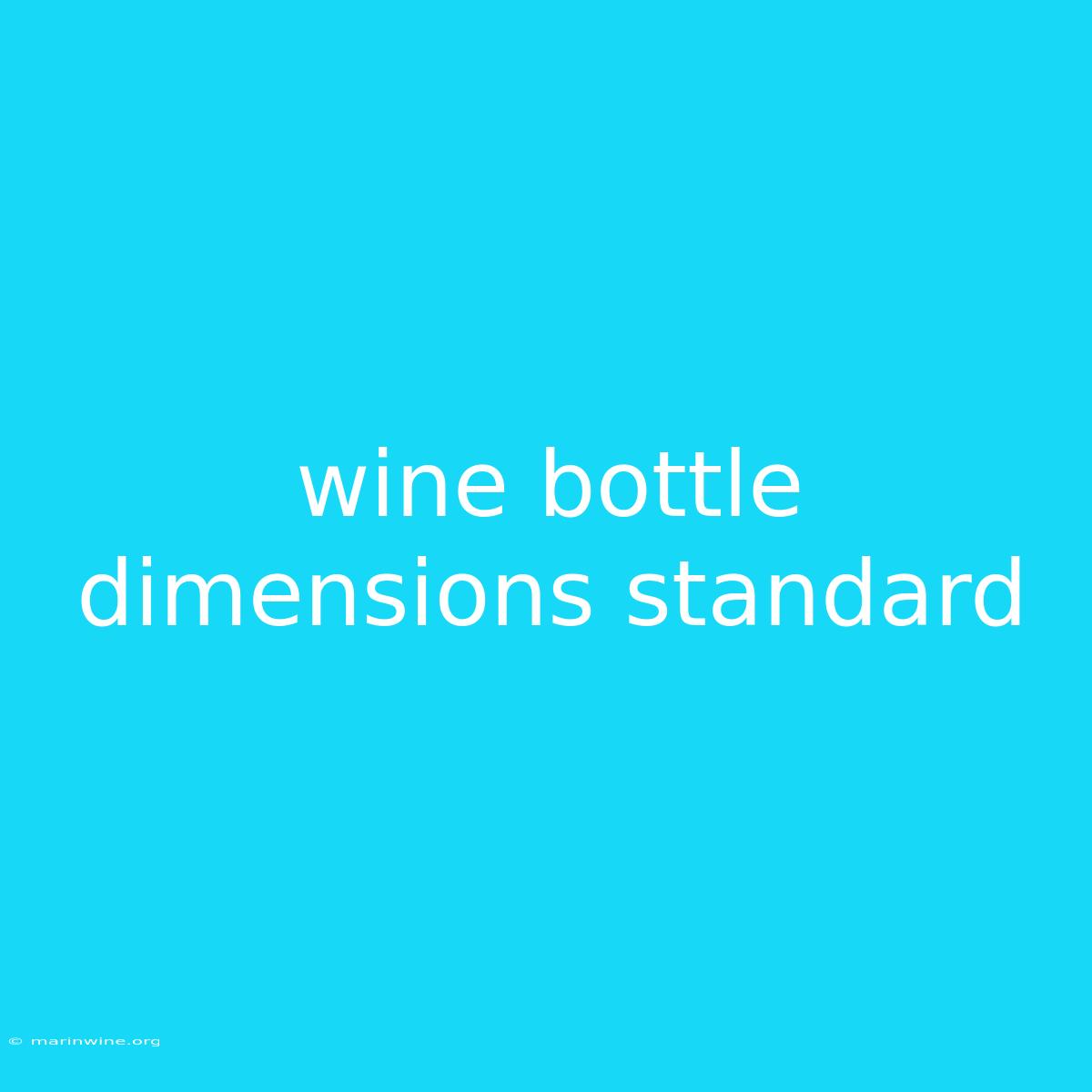Wine Bottle Dimensions: A Standard You Can Count On
Have you ever wondered why wine bottles all seem to be the same size? It's no coincidence! There's a standard set of dimensions that wine bottles adhere to, ensuring consistency across the industry.
Why This Matters: Understanding these dimensions is crucial for wine producers, distributors, and even consumers. It ensures bottles fit standard packaging and storage, facilitates efficient transportation, and allows for consistent labeling and presentation.
Key Takeaways of Wine Bottle Dimensions
| Aspect | Standard Dimension |
|---|---|
| Height | 305-315 mm (12-12.4 inches) |
| Diameter | 80-88 mm (3.1-3.5 inches) |
| Capacity | 750 ml (25.4 fl oz) |
| Neck Diameter | 18-20 mm (0.7-0.8 inches) |
| Glass Thickness | 3-4 mm (0.12-0.16 inches) |
Wine Bottle Dimensions: Exploring the Details
The Standard 750 ml Bottle
The vast majority of wine bottles are 750 ml in capacity. This standard volume is rooted in the French system of measurement, where it was commonly used for liquid goods. This consistency ensures efficient production, storage, and shipping.
Height and Diameter: Maintaining Harmony
The height and diameter of a wine bottle are carefully calibrated. The standard height of 305-315 mm allows for a comfortable grip and easy pouring. The diameter, typically between 80-88 mm, provides a balance between volume and visual appeal.
The Importance of the Neck
The neck of a wine bottle is crucial. It's where the cork is inserted, and the diameter of the neck determines the size of the cork needed. The standard neck diameter of 18-20 mm ensures a secure fit and allows for consistent corking across the industry.
Glass Thickness: Durability and Aesthetics
Glass thickness plays a significant role in the bottle's durability and overall appearance. A thicker glass is more robust and less prone to breakage, while a thinner glass offers a more elegant look. The standard thickness of 3-4 mm provides a balance between strength and visual appeal.
Variations in Wine Bottle Dimensions
While the standard dimensions are widely followed, there are variations depending on the type of wine and the producer's preferences. For example, some producers opt for larger bottles, like magnums (1.5 liters) or jeroboams (3 liters), while others use smaller bottles, like half-bottles (375 ml).
Understanding the Impact of Variations
Variations in bottle dimensions can influence wine storage, presentation, and the perception of the wine itself. Larger bottles offer greater aging potential, while smaller bottles are more convenient for casual consumption.
FAQ: Wine Bottle Dimensions
Q: What is the purpose of the standard dimensions?
A: Standard dimensions ensure consistent production, storage, and shipping. They also allow for consistent labeling and presentation, making it easier for consumers to identify and choose wines.
Q: Are there any specific guidelines for wine bottle shape?
A: While the dimensions are standardized, the shape of the bottle can vary greatly. Some bottles are rounder, while others are more elongated. The shape is often a matter of aesthetics and tradition.
Q: Can I reuse wine bottles for other purposes?
A: Yes, wine bottles can be repurposed into decorative items, vases, or even used for storing other liquids. However, it's important to thoroughly clean and sanitize the bottles before using them for other purposes.
Q: How does the bottle's design influence wine aging?
A: The bottle's shape and dimensions can influence the rate at which wine ages. For example, bottles with a larger surface area will have more contact with air, which can accelerate aging.
Tips for Handling Wine Bottles
- Store bottles horizontally: This helps keep the cork moist and prevents oxidation.
- Avoid storing in direct sunlight: Sunlight can damage the wine.
- Store in a cool, dry place: Ideal storage temperatures range from 55°F to 65°F.
- Handle with care: Wine bottles are delicate and can easily break.
- Use a bottle opener: Never attempt to open a wine bottle with a knife or other sharp object.
Summary of Wine Bottle Dimensions
The standard dimensions for wine bottles ensure consistency across the industry, making it easier to produce, store, and ship these beloved beverages. Understanding these dimensions allows you to appreciate the intricacies of wine bottle design and to make informed choices when selecting your favorite wines.

